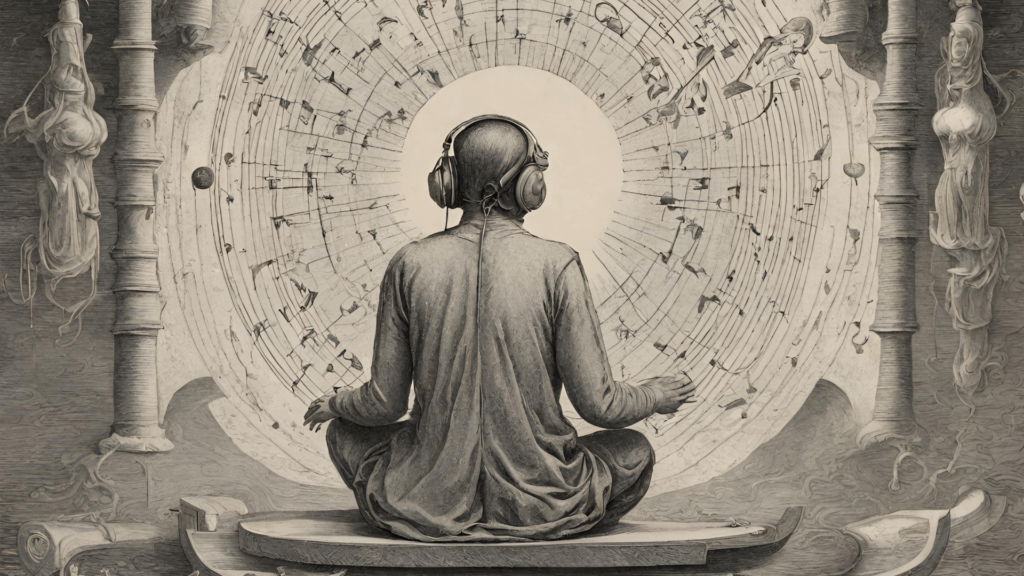In the last few years I’ve gone from not being able to find anything new I wanted to listen to, to discovering so much music I love that I don’t have enough time to listen to all of it. I’ve gone from thinking that contemporary popular music is in a decades-long decline to wondering if there has ever been a better time for music than right now. I made this shift by changing how I listen to music.
The Power of Creating Your Own Genres
In this post I’m going to share a method for increasing the amount of enjoyment you can get from music. It involves using playlists to create your own “personal microgenres.” These microgenres orient you to songs in a highly personalized way, making it easier to recognize and appreciate the aspects of songs that you most resonate with.The process of creating the genres sensitizes you to qualities that you’re drawn to in music; qualities which your conscious mind may not yet recognize as preferences.
The act of distinguishing—and then naming—the quality you are subtly drawn to raises awareness of a tacit inclination that is initially fuzzy and faint. The creation of the playlist serves this “distinguishing and naming” function and it brings the nascent preference more fully into awareness, such that it becomes a thing that you can start to deliberately listen for. The range of what you are able to appreciate in music expands through this process, and I’ll provide a personal example to demonstrate this at the end of the post. Before that I will discuss how this approach differs from traditional music appreciation methods and then go through the practice itself, step-by-step.
How This Differs from Standard Music Appreciation Methods
The goal here is not to learn more about music in general so that you can recognize aspects of songs you were unaware of before such as “syncopation” and “chord voicing.” A typical music appreciation course would provide that.
The approach laid out here involves learning to recognize what you in particular respond to in music.
It’s not about the music itself, independent of you, as would be presented in a music theory course; it’s about the music as it appears to you, or as you personally experience it. When you listen to a piece of music, there is a commingling of you and the song, and it’s that “you + song” unity that is explored here, not the song in isolation.
You are developing sensitivity to what you uniquely respond to in music, and this does not already exist as objective knowledge to be imparted, like information about scales and chords in a music theory textbook. This is discovered in a very personal way through the process I’m going to share with you. Once it’s discovered, it feeds back into your listening process, transforming it. You learn to “develop an ear” for that which you love most in music.
The Expressive Playlisting Process
The process involves a practice I introduced in the last post, called expressive playlisting. Here I will provide a brief overview of how to do it, before zooming into details in follow-up posts.
Step 1: Noticing
The curation process begins by paying attention to whatever pulls you in the new music you’re exposing yourself to. A “pull” is the spontaneous experience of feeling drawn to something, in this case, a song or some part of a song. It’s a feeling of interest, affinity or attraction. When a song is playing in the background and something in it makes you perk up and pay attention, you’ve been “pulled” by it.
Pulls can be hard to notice, especially when our biases get in the way. I’ll give you an example from my own experience. Noticing what pulled me within country music was hard initially because of an unreflected-upon resistance I had to the genre as a whole. I also avoided the kind of colorful pop music I really like because of standards I’d internalized from my social environment about what constitutes “good music.” I doubt I’m the only one like this; my guess is that many of us have learned to feel sheepish or embarrassed by what pulls us, and we overlook it as a result.
Listen to music and practice noticing what attracts you. Many songs may leave you indifferent, but with some there will be this internal flicker. Something about the song piques your interest. This can be so unconscious that it may show up behaviorally at first: you may notice that you’re suddenly biking faster when a certain song comes on, or unconsciously reaching to turn the volume up. The first step is to notice the songs that draw you—in even the faintest way—and collect them in one spot.
This results in an initial distinction creating two categories:

Step 2: Distinguishing
Keep listening to the songs in the category of “songs I’m drawn to,” and notice how some begin to cluster together around particular themes or motifs. The category will start to become internally differentiated (I’ve used the colors orange and blue to illustrate this in the diagram below).
For example, you might notice that three of the songs you like have a similar quality that’s hard to put into words. This emerging sense of a pattern is the first step in the identification of a playlist theme.

You can listen to the songs over and over as a way to feel into the theme. You might notice consistent imagery and feeling qualities arising within you as you do so. Through this process you arrive at a “handle” which is an image or phrase that captures the distinct quality you are responding to. There’s a sense that all three songs express this quality in their own way.
An example of this in my own case, was the discovery of an image of a person being carried along on a conveyor belt, and the phrase “moving while standing still” that evoked the quality that spanned several songs in what would become the playlist Pulse.
The handle is important because it gives you something to hold on to when listening to the songs—something that orients you to the quality that you are coming to recognize. By fixing it in a word, image or phrase, it becomes easier to notice and come back to.
Step 3: Splitting
At this point, the cluster of related songs may separate out and become a particular genre or “theme” playlist of its own as illustrated below:

Notice that this is an unusual kind of genre in that it has emerged out of your own experiencing of the music. You “discovered it” in a sense.
Unlike categories such as “pop,” “rap,” and “rock,” this category grew out of your own personal involvement with music. It wasn’t taught to you or picked up from your social environment. It was initially implicit in what drew you, as a listener, to a particular song. It gradually became more explicit through the process above, ultimately becoming a distinct “something” separate from you and potentially shareable with others in the form of a playlist.
As you repeat the steps above, your library of playlists will continue to grow. I started out with five and now have over twenty-five. You may notice that the range of music you’re able to enjoy expands as this process unfolds. The motifs you’re drawn to start showing up in genres you’ve never really listened to before.
When I started this project, I was not listening to rap at all. A playlist like Lilt emerged from listening to genres I was more familiar with like R&B and pop. That is where I first became aware of this rhythmic element of “bounciness” that I was drawn to in music. Once I became aware of it, I was then increasingly able to hear this quality in genres I didn’t normally listen to, such as hip-hop. I now listen for “lilt” when I listen to rap, and its opened up a whole new world of music to enjoy because the quality turns out to be omnipresent in this musical genre.
In future posts I will go into this process in greater detail, starting with the next post where I focus on the notion of a “pull” that is at the heart of this curation approach.
Last Updated on March 4, 2025

